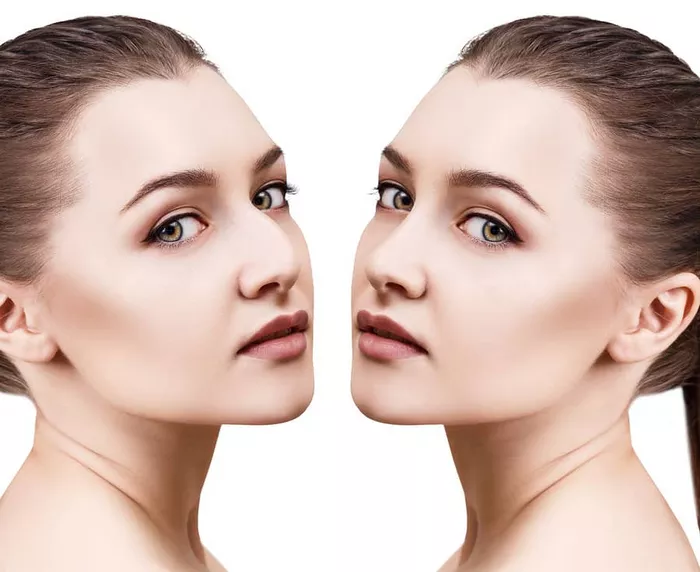Buccal fat removal surgery, also known as cheek reduction surgery, is a cosmetic procedure that has gained popularity for its ability to sculpt the facial contours and create a slimmer, more defined appearance. This surgical technique is designed to address excess fat deposits in the buccal fat pads, which are located in the cheeks. In this comprehensive guide, we will explore what buccal fat removal surgery entails, its potential benefits, candidacy, the surgical procedure, recovery, risks, and expected results.
Understanding Buccal Fat
Before delving into the details of buccal fat removal surgery, it’s essential to understand the role of buccal fat pads in the face. The buccal fat pads are located on either side of the face, beneath the cheekbones. These pads of fat contribute to the youthful fullness of the cheeks and are most prominent in childhood and adolescence. However, some individuals retain excess buccal fat into adulthood, leading to a rounder or fuller facial appearance.
Buccal fat removal surgery is designed to reduce the size of these fat pads, creating a more sculpted and refined facial contour.
Benefits of Buccal Fat Removal Surgery
Buccal fat removal surgery offers several potential benefits:
Enhanced Facial Contours: The primary goal of buccal fat removal is to create a slimmer, more defined facial appearance by reducing excess fullness in the cheeks.
Youthful Appearance: By achieving a balanced facial contour, this procedure can create a more youthful and harmonious facial structure.
Customizable Results: Surgeons can tailor the surgery to meet the patient’s desired level of cheek reduction, ensuring a natural and proportionate outcome.
Minimal Scarring: Buccal fat removal requires small incisions inside the mouth, leaving no visible scars on the external face.
Quick Procedure: The surgery is typically brief, often taking less than an hour to complete.
Minimal Downtime: Patients usually experience minimal downtime and can return to their regular activities relatively quickly.
Candidacy for Buccal Fat Removal
Not everyone is a suitable candidate for buccal fat removal surgery. Ideal candidates typically:
Have excess fat in the buccal fat pads that creates a round or overly full appearance in the cheeks.
Are in good overall health and do not have underlying medical conditions that may complicate surgery.
Have realistic expectations about the outcome of the procedure.
Understand that buccal fat removal is a permanent alteration to facial anatomy and that the results may change with age.
Are non-smokers or are willing to quit smoking before and after surgery to optimize healing.
The Buccal Fat Removal Procedure
Buccalfat removal is a surgical procedure that is typically performed on an outpatient basis. Here are the key steps involved in the surgery:
Anesthesia: The procedure is often performed under local anesthesia with sedation or general anesthesia, depending on the patient’s comfort and the surgeon’s recommendation.
Incisions: The surgeon makes small incisions on the inside of the cheeks, near the back of the mouth. These incisions are strategically placed to avoid external scarring.
Fat Removal: Through the incisions, the surgeon carefully locates and removes the excess buccal fat pads.
Closure: The incisions are closed with dissolvable sutures, and the procedure is complete.
Recovery After Buccal Fat Removal
Recovery following buccal fat removal surgery is relatively straightforward, and most patients can resume normal activities within a week or two. Here are some important aspects of the recovery process:
Swelling and Bruising: Swelling and bruising in the cheek area are common after surgery. These effects typically peak within a few days and gradually subside over the following weeks.
Pain Management: Some discomfort is normal and can be managed with prescribed pain medication or over-the-counter pain relievers.
Diet: Patients are usually advised to follow a soft diet for a few days to avoid putting excessive pressure on the surgical sites.
Oral Hygiene: Maintaining good oral hygiene is crucial during recovery to reduce the risk of infection.
Follow-Up Appointments: Patients will have follow-up appointments with their surgeon to monitor healing and ensure that the recovery process is progressing as expected.
Potential Risks and Considerations
Like any surgical procedure, buccal fat removal carries certain risks and considerations:
Over-Reduction: Excessive removal of buccal fat can lead to a gaunt or hollow appearance. It is essential for the surgeon to strike the right balance to achieve a natural-looking outcome.
Infection: Although rare, infection is a possible complication. Proper post-operative care and following the surgeon’s instructions can help minimize this risk.
Nerve Damage: There is a small risk of temporary or permanent damage to facial nerves, which could affect facial muscle movement. However, this risk is relatively low when the procedure is performed by a skilled surgeon.
Unpredictable Results: Buccal fat removal results can vary from person to person, and some individuals may experience changes in facial fullness with age.
Expected Results
The final results of buccal fat removal surgery become more apparent as the initial post-operative swelling subsides, usually within several weeks to a few months. Patients can expect a slimmer and more defined facial contour, with improved cheek definition and balance. The results are typically permanent, as the buccal fat pads do not regenerate.
Conclusion
Buccal fat removal surgery is a cosmetic procedure designed to reduce excess fat in the buccal fat pads, creating a more sculpted and refined facial appearance. It offers benefits such as enhanced facial contours, a youthful look, and minimal scarring. While it is a relatively straightforward surgery with a short recovery period, it is crucial for potential candidates to consult with a qualified plastic surgeon to determine their suitability for the procedure and to discuss their specific goals and expectations. When performed by a skilled surgeon, buccal fat removal can provide natural-looking and satisfying results that help individuals achieve the facial aesthetics they desire.


